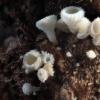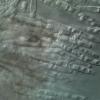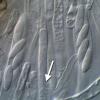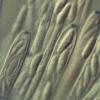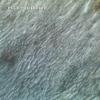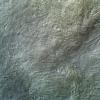
05-01-2018 20:40
 Chris Yeates
Chris Yeates
Bonsoir tousI expected this collection to be a str

06-01-2018 18:56
 Andgelo Mombert
Andgelo Mombert
Bonsoir à tous,Habitat : dans un tapis de mousses

03-01-2018 22:23
 Rubén Martínez-Gil
Rubén Martínez-Gil
Hola a todos. Subo unas fotos de una Melastiza en

06-01-2018 10:53
Me mandan desde Galicia este materialHe hecho vari

05-01-2018 23:12
Small, but crowded, on Fagus.Spores 15-17 x 2 my.N

04-01-2018 11:39
Erwin GruberDear colleages, i have been absent again for a whi

02-09-2017 18:34
 Nicolas VAN VOOREN
Nicolas VAN VOOREN
Bonjour.Je cherche une copie PDF de cet article:Di

03-01-2018 19:41
 Matthias Mann
Matthias Mann
Dear specialists, I found the following in Austria
white Lachnum on Pinus cone
Chris Yeates,
05-01-2018 20:40
 Bonsoir tous
Bonsoir tousI expected this collection to be a straightforward Lachnum virgineum, but it lacks the prominent lanceolate paraphyses of that species and, along with other characters, the spores differ.
Apothecia clustered towards the proximal end of a cone of a Pinus sp. (planted, non-native).
Asci 8-spored, J+ (MLZ used here - a slip, I had intended Lugol), croziers present (arrowed).
Ascospores ellipsoid-fusoid 10.5-11.7 x 3.4,3.8µm (Qe = 3.1).
Hairs ornamented along full-length, cylindrical, not expanding at apex.
Ectal excipulum of very small,rather thick-walled, and narrow cells, becoming maze-like at junction with stem, and very narrowly parallel in stipe (see images).
Any suggestions and/or help very welcome.
Chris
Hans-Otto Baral,
08-01-2018 23:54

Re : white Lachnum on Pinus cone
Hi Chris
I am sorry i cannot name this with confidence. And I overlooked your posting.
The hairs clearly point to L. virgineum. With this DCI contrast and the high resolution it is a bit difficult also. The asci were not alive? Are only a few mature? Spore number does not seem to be reduced?
maybe the paraphyses are slightly lanceolate? I still guess it is a misdeveloped L. virgineum.
Zotto
I am sorry i cannot name this with confidence. And I overlooked your posting.
The hairs clearly point to L. virgineum. With this DCI contrast and the high resolution it is a bit difficult also. The asci were not alive? Are only a few mature? Spore number does not seem to be reduced?
maybe the paraphyses are slightly lanceolate? I still guess it is a misdeveloped L. virgineum.
Zotto
Chris Yeates,
09-01-2018 03:03

Re : white Lachnum on Pinus cone
Thanks for that Zotto
I can see that my confusion was understandable. It may have been exaggerated by the fact that the specimen has been incubated for a while in the fridge and may well have developed atypically - there were, in addition, some abnormal spores which I ignored.
best wishes
Chris
I can see that my confusion was understandable. It may have been exaggerated by the fact that the specimen has been incubated for a while in the fridge and may well have developed atypically - there were, in addition, some abnormal spores which I ignored.
best wishes
Chris
